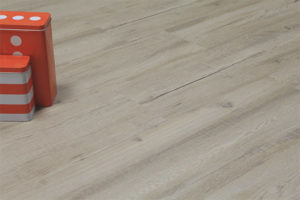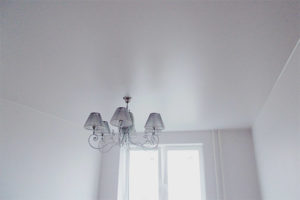The content of the article
How to prepare the walls for painting? One phrase and not tell. After all, the final look of the room will depend on the quality of the preliminary preparation. You must admit that it’s not pleasant when, after the topcoat has dried, pits, mounds and other troubles appear.
Some neglect the preparation of walls for painting. The result is depressing. In order not to be in a similar situation, we will analyze each step in detail.
Removing old coating
Modern wallpaper or putty may well serve as the basis for painting without prior preparation. But, only in the case of perfect adhesion to the wall. Otherwise, after the paint dries, every slightest flaw will be unpleasant to cut your eyes.
To avoid risk, it is much easier to remove any coating to the base and apply a new one. So you will be sure that subsequently the paint will lie perfectly evenly.
Wallpaper. In order to quickly remove them from the wall, you will need:
- Warm water
- Wide hard spatula
- Needle roller
- Thick film
- Special remover or regular bath foam
- Spray gun, wide brush or fluffy roller
Procedure. They cover the floor next to the wall with dense polyethylene. This is necessary so as not to guess it. Then the wall is treated with a needle roller. Through the resulting micro-holes, water penetrates more easily. Therefore, the cleaning process is greatly facilitated.
It doesn’t matter which wallpaper to remove, paper or non-woven. Both species are best pre-"perforated." Now you need to dilute a special tool in warm water. It is advisable to follow the manufacturer's recommendations. If such a tool is not at hand, then you can add 2-2.5 caps of any bath foam to 10 liters of clean water.
Tip. Foam is perfectly replaced by any fabric softener.
Stir the resulting liquid well, then thoroughly moisten the old wallpaper. A roller or brush does a good job of this. But we recommend using a spray bottle. The fluid flow will be less, and the area of the treated surface will increase. In addition, this method is the least dirty, it practically does not leave streaks.
After applying the fluid, wait 16-18 minutes. During this time, it will impregnate the wallpaper and penetrate through the holes to the adhesive layer. The accuracy of the treatment is evaluated visually. The coating becomes loose and convex.
Now they take a spatula and clean the old wallpaper from the wall. Paper films are removed by lumps, and non-woven ones are removed by almost the whole canvas. But, with proper processing, both species are removed quite well and quickly.
Tip. If pieces that are badly behind the wall come across during work, then you should not pick them up with a spatula. This may result in a decent scratch or fossa. It is better to re-apply the solution, and again let it soak for a while.
Sometimes the above method does not work at all. It means that the canvases were not glued to wallpaper glue, but to a more durable substance. In this case, you have to work hard. How - read below.
Putty, old paint and "waterproof" wallpaper. Such an old coating will cause a lot of trouble when removed. But, if you leave it and paint the walls from above, then there will be even more problems. For example, no matter how high-quality putty was applied, over time it tends to exfoliate. And the paint does not contain fastening components. Therefore, one day the whole thing with a cheerful roar will flicker to the floor. Or at first it will swell up, and only then it will fall off.
In order not to see such a picture, we stock up:
- With a grinder or drill with a special nozzle.
- Film and masking tape. It will take a lot.
- Goggles, respirator, gloves, shoe covers.
Procedure. They cover everything that is possible and impossible with a film. If necessary, fix it with tape. Dress up in protective equipment. Shoe covers - not on foot. Hair cover them! Believe me, it’s almost impossible to wash the resulting fine dust out of them. All the same, no one sees what is put on his head.
Then turn on the grinder and begin to clean the wall. If you are 100% sure of the quality of your putty and plaster, then it is not necessary to remove the entire coating to the base. If you have doubts or when you tap the wall you hear dull sounds - congratulations! Have to smell. But you will have the opportunity after trying your hand at filling the wall from scratch.
After the most draft work is done, a new stage begins. Before this, we advise you to remove all the old film with dust and lay another. Otherwise, dust particles will take off during your movements and land on the walls. This will prevent good putty adhesion to the surface.
Tip. You can try to remove the old paint with a special wash. But this is a very smelly, long matter. And the putty will still have to be removed later.
New coating
It doesn’t matter what it is supposed to be painted on. Whether it is decorative plaster or wallpaper for painting, it is still necessary to first align the wall and putty.
So what do we have? A terrible tattered dusty wall. First you need to clean it from dust. Otherwise, the putty will simply not hold. This can be done with a stiff brush or an old vacuum cleaner.
Do not rush to putty putty solution! Carefully inspect the wall for mold or traces of fungus. If there is any sign, treat the damaged area with copper sulfate solution. It is advisable to grab about 35-39 cm of clean surface around, in order to avoid the spread of dirty tricks further. If we neglect this stage, then in the near future we can safely expect the appearance of black spots of the fungus. And already on top of the finish painting. Do you need it?
Tip. In order not to risk it, we recommend treating the entire surface of the wall with an antifungal agent. Better to retake.
After drying, do not run again for the putty package. And we take any deep penetration soil again mazyukem wall. As a rule, such a mixture is always liquid, like water. And to apply it with a brush or roller is an impermissible luxury and a large overspending. Try using a spray bottle. The primer will turn out to be more even and virtually waste-free.
Tip. Whoever has a garden sprayer should definitely use it. The nozzle size is adjustable so that it is not clogged with particles of the primer, and pressure will help to complete this stage of work quickly, economically and efficiently.
And now, a day after applying the soil, you can drag a bag with putty. And again, do not rush to breed it with water. Have the lighthouses installed? Prepared the rule and spatulas? Will you putty on the eye? Well, if you are confident in your abilities ... In fact, even professionals with many years of experience use the lighthouse wall leveling system. Although, any amateur always flatter himself. Try it and you. After all, there is certainly time and money for re-preparing the walls for painting ...
Do not show off. Set beacons by level. And for coarse putty, choose a coarse-grained mixture. Bring it according to the instructions and do not hesitate. Put more on the rule and drive it from the bottom up. Just do not splash the mortar on the wall! It will fall on you back. Not all masters use this application technique, let alone lay people.
And do not try to simultaneously smooth out all the bumps. Then, all the same, you need to apply the finishing putty of fine granularity on a gypsum basis. So she will even out minor flaws. By the way, large ones you can try to gently smooth after 40-45 minutes of drying.To do this, you need to take a special wooden building "grater" with a large mesh or sandpaper. And in smooth circular movements to remove large filler crumbs.
Tip. In order not to pull out the beacons from the walls, use aluminum. They do not rust over time, they can be safely left in the wall.
After the rough layer dries well, you can apply the finishing putty. The method of the last preparation of the walls depends on what the result is needed (dullness or gloss).
Matt Put the finishing putty in a thin layer, let it dry thoroughly. Then the surface was polished with dry fine sandpaper to a slight roughness.
Glossy. Do not wait for the complete drying of the finish layer. 30 minutes after application, possible irregularities are smoothed with wet sandpaper.
Tip. For the best result, sandpaper is fixed on a construction grater or level bar. Use self-tapping screws or cloves. Glue will not work.
Useful Tips
- Most of the preparatory work is greatly simplified with the help of professional power tools. But the cost of some of them exceeds the price of the repair itself. To acquire them is too expensive and unjustified. If you have to process a large area, then look for rental advertisements. Most construction companies provide such a service at a very affordable price.
- Sometimes a person absolutely does not know which side to hold a brush or spatula. Do not be surprised, this is now happening everywhere. We recommend hiring a team of craftsmen. Payment for their services will undoubtedly be lower than the cost of materials damaged by the amateur.
- However, if you have a great desire to learn how to do everything yourself, then try. Practice shows that when a person does for himself, the result is very good even the first time.
How to prepare the walls for painting? As you can see, this is not so difficult. More time will be spent on the final drying of the finish coating than on the work itself. As the saying goes: eyes are afraid, and hands ... And what makes your hands worse? Follow all recommendations and everything will turn out in the best possible way.
Video: how to putty walls for painting










Submit